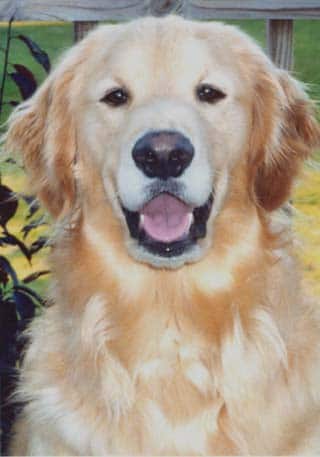
Has your pet got a tired old brain?
Continuing advances in pet care mean that pets are living longer and thus, geriatric diseases of pets are now more common. For instance, senile changes in behaviour, similar to Alzheimer’s Disease in humans, are now readily recognised and treated. The result is that some old dogs are getting a new lease on life.
So, rather than saying to yourself – “Yes, Barney is just an old dog – that’s why he’s a bit vague and silly nowadays” you should be trotting of to your vet and seeking solutions. Old Barney is likely to have plenty of life in him yet.
The term Canine Cognitive Dysfunction (CCD) is given to a collection of behavioural changes seen in older pets and these changes are very similar to Alzheimer’s Disease in humans.
How Do I Know My Dog Has CCD?
If your pet has CCD, it will show a variety of changes in its behaviour that could include: –
Changes in its sleep-wake cycle, such that Pooch sleeps more in the day and less in the night.
Changes in its social interactions with members of the family such that Pooch greets you less, for instance when you come home. It may show a decrease in the need for affection from you. Your pet may seem more distant, behaviourally, and it may not seek attention and pats as much.
Strange signs of disorientation, such as walking into a corner or behind furniture and then not knowing how to get out. Perhaps you may catch Pooch staring into space. Some dogs with CCD don’t recognise normal routines any longer.
Reduction in cleanliness around the house with a loss of signalling to go outside and resultant house soiling.
These changes in behaviour are usually readily recognised but, while 75% of the owners of aged pets notice at least one of the above signs, regretfully, most don’t realise the problem is often treatable and that’s unfortunate because the condition is progressive. Once the signs are seen, dogs get worse without treatment.
The brain is a victim to the wear and tear of old age. Many changes occur in the brain – some being structural, such as a reduction in brain size, a loss of functional neurons and the development of chemical plaques all of which reduce the brain’s effectiveness. Chemical changes also occur such as a reduction in essential neurotransmitters. Another danger is that ageing cells produce by products called free radicals. Because the brain has a high fat content and a high demand for oxygen it is a prime target for being damaged by these free radicals.
Canine Cognitive Dysfunction can be difficult to diagnose. Other ageing disorders such as arthritis, a reduction in vision and hearing, diabetes, liver disease, cardio-vascular disease and anxieties can cause similar signs to CCD. If you are concerned that your pet is suffering from this condition, your veterinarian will need to conduct a full examination on your pet to determine other underlying causes and to treat them appropriately.
Are Cures Available?
The condition can be treated and the options include medications, dietary changes, behaviour modification and changes to the pet’s environment.
Medication is often quite effective in reducing the signs of CCD with some dogs improving within two weeks. The medication is tolerated well by pets and there are usually no significant side effects.
A new diet has recently been released on the market specifically for CCD. This diet contains increased levels of antioxidants to reduce the free radicals produced in ageing brains. The antioxidants in this diet include Vitamins E and C. A special mix of fruit and vegetables are also added to give increased levels of the antioxidants known as carotenoids and flavenoids.
Other ingredients are included to promote cell function and durability. Research has shown that this form of dietary management improved the learning ability of older dogs by 58%.
Behaviour modification for CCD involves giving the Pooch a rich environment designed to stimulate its brain. ‘Use it or lose it’ is the principal and, providing toys, simple brain challenges and brain games involving simple training routines are ideal because many older dogs are chronically bored.
Changing the pet’s environment may also help. Because many old dogs are arthritic, be sure your dog has comfortable soft bedding and that the stairs it has to climb are not slippery. Be sure the dog can easily negotiate the back door and the steps so that when the call of nature beckons, it can easily get to the garden to relieve itself. Don’t forget to take it out for a wee walk before bed time.

Lastly, don’t forget the value of a casual walk or stroll along the street.
If you have an old pet that’s becoming vague, don’t presume that nothing that can be done. It may be younger than you think!
